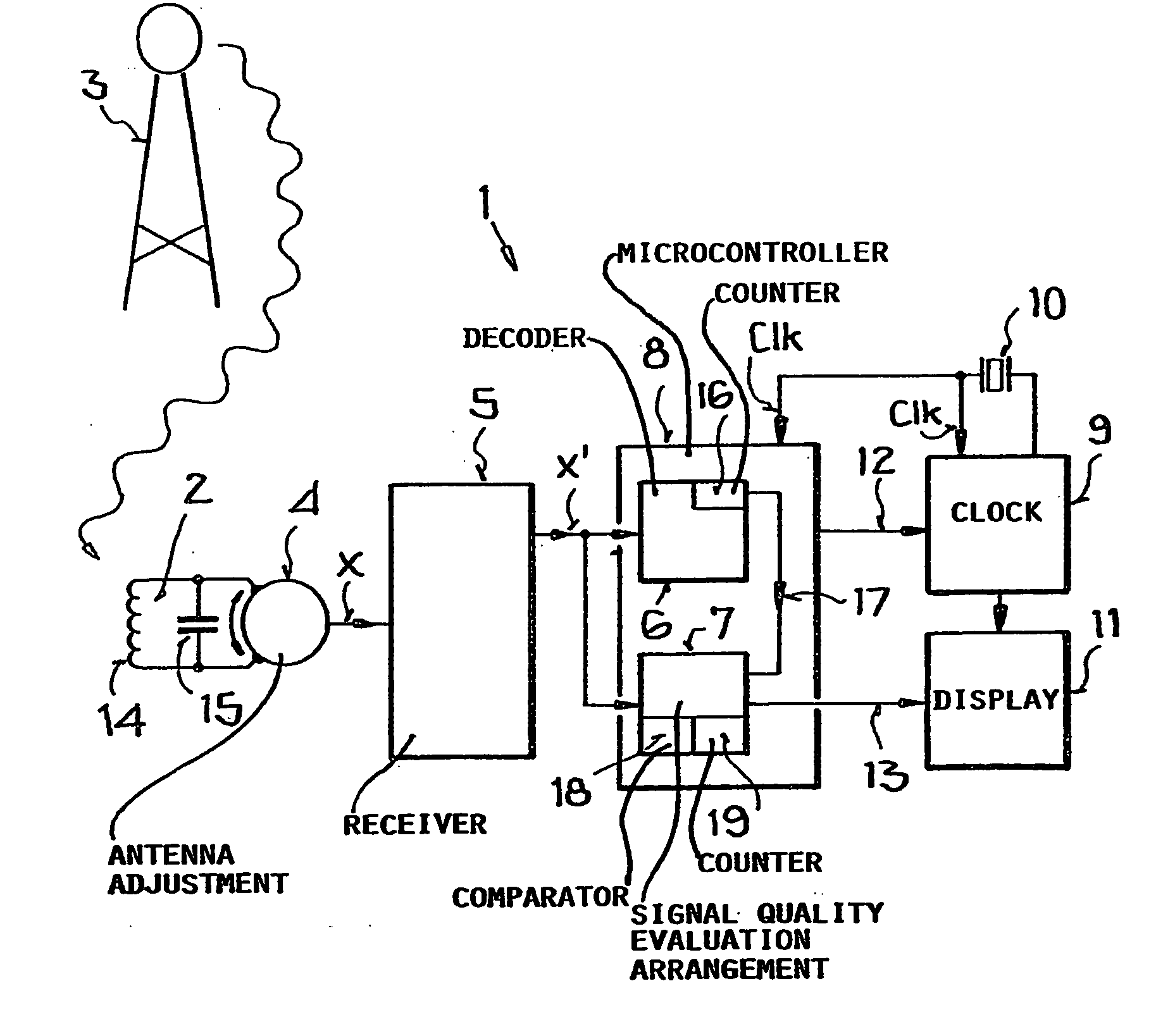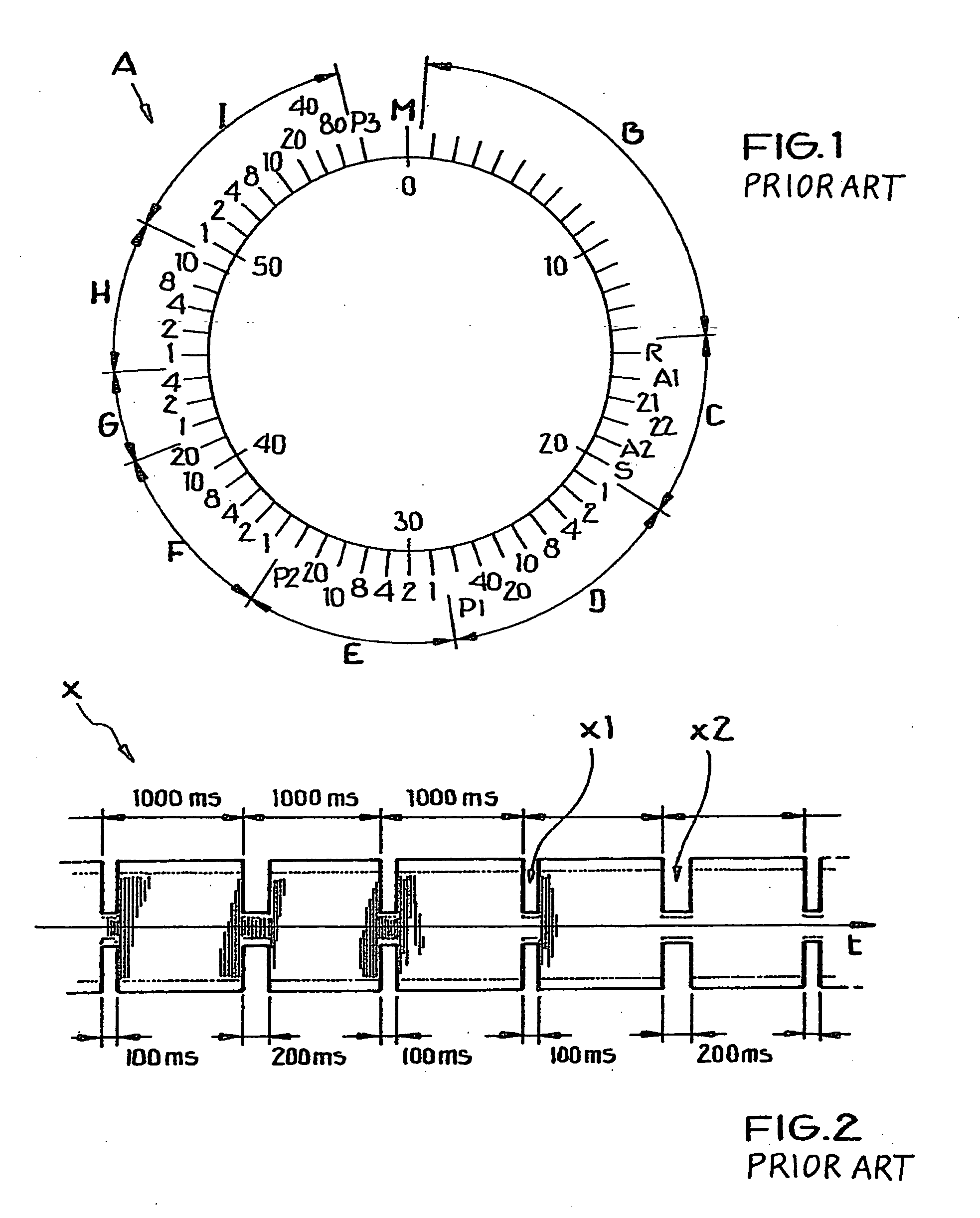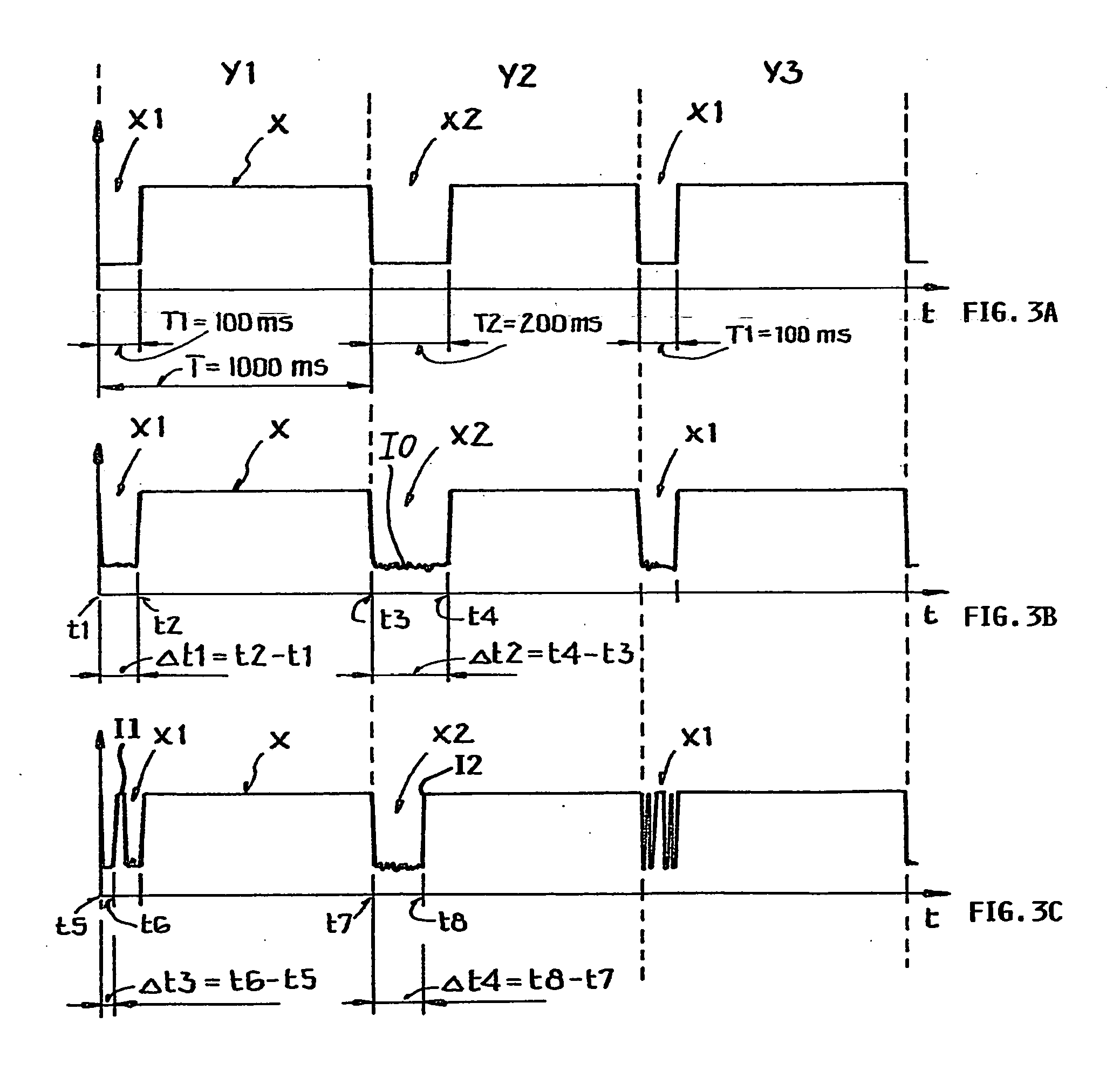Radio-controlled clock and method for determining the signal quality of a transmitted time signal
a radio-controlled clock and signal quality technology, applied in the field of radio-controlled clocks and methods for determining the signal quality of transmitted time signals, can solve the problems of interference signals, inability to correctly recognize and evaluate the second marker of signals, and inability to receive time signals. to achieve the effect of simple method of determining signal quality
- Summary
- Abstract
- Description
- Claims
- Application Information
AI Technical Summary
Benefits of technology
Problems solved by technology
Method used
Image
Examples
Embodiment Construction
[0068] In all of the drawing figures, the same elements and signals, as well as the elements and signals respectively having the same functions, are identified by the same reference numbers, unless the contrary is indicated.
[0069] The general format of an encoding scheme or time code telegram A as conventionally known in the time signal transmitted by the German time signal transmitter DCF-77 has been explained above in connection with FIG. 1 in the Background Information section of this specification. Also, the time-variation of the amplitude-modulated time signal is schematically shown in the time diagram of FIG. 2 as discussed above.
[0070]FIG. 3 includes three sub-figures, namely FIGS. 3A, 3B and 3C respectively showing variants of a time signal. FIG. 3A shows a portion of an idealized time signal as transmitted by the German time signal transmitter DCF-77, for example in accordance with the time signal telegram discussed above in connection with FIGS. 1 and 2. FIGS. 3B and 3C ...
PUM
 Login to View More
Login to View More Abstract
Description
Claims
Application Information
 Login to View More
Login to View More - R&D
- Intellectual Property
- Life Sciences
- Materials
- Tech Scout
- Unparalleled Data Quality
- Higher Quality Content
- 60% Fewer Hallucinations
Browse by: Latest US Patents, China's latest patents, Technical Efficacy Thesaurus, Application Domain, Technology Topic, Popular Technical Reports.
© 2025 PatSnap. All rights reserved.Legal|Privacy policy|Modern Slavery Act Transparency Statement|Sitemap|About US| Contact US: help@patsnap.com



